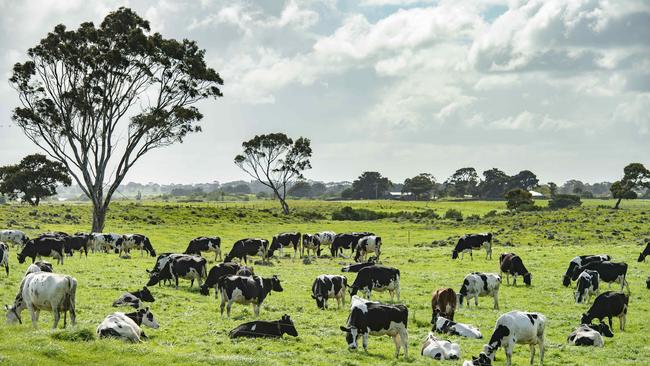Victoria’s three dairy regions record strong average profit margins
The average profit margins and key production statistics for Victoria’s three dairy regions have been revealed. How does your farm measure up?

Northern Victoria led the state’s three dairy regions in terms of average net farm income, new statistics show.
A breakdown of data from the Victorian Dairy Farm Monitor project has shown northern Victoria led the way on the net farm income score with a $401,000 average across the region’s surveyed farms.
In the same net farm income category, south-west Victoria notched up an impressive $355,000 while Gippsland notched up a substantial $220,000 average.
On average, northern region milk production per cow was stable while there was a decrease in purchased feed owing to favourable seasonal conditions and lower water prices.
The average stocking rate in northern Victoria increased 8 per cent to 1.7 cows per hectare in 2020-21 compared to the 2019-20 financial year.
United Dairyfarmers of Victoria president Paul Mumford said the 2020-21 statistics showed most parts of the state’s dairy sector enjoyed strong returns last year with only a few outliers.
He said it was rare for all three dairy regions to deliver parallel robust returns, with climatic conditions usually differing by location.
“Sometimes the south-west does well, or the northern region or Gippsland and another doesn’t have as good a year. This time around, most farmers across Victoria had a good season, although there can be exceptions to the rule,” Mr Mumford said.
Gippsland can lay claim to having the greatest number of farms out of Australia’s 10 dairy regions with 1100 individual dairies operating last financial year.
Wet conditions, particularly in south and west Gippsland, contributed to the lower homegrown feed production and economic performance.
Average herd size in Gippsland remained stable at 308 cows in 2020-21 compared with the previous financial year.
Milk solids sold also remained stable at 485 kilogram of milk solids per cow in 2020-21 compared with the 2019-20 financial year.
Meanwhile, south-west Victoria boasted 1070 farms last financial year, pumping out 22 per cent of the nation’s milk.
The average herd size in the south west remained stable at 373 cows in 2020-21 compared with the previous financial year.
Colac region farmer and UDV vice president Mark Billing said south-west Victoria had enjoyed a string of profitable years, making up somewhat from the fallout from the 2016 clawback.
Mr Billing said the 2020-21 season had given primary producers the widest variety of options in living memory.
“When you have strong prices, it gives you the ability to expand your business — invest in upgrade work to the dairy or the farm generally,” Mr Billing said.
“It’s also brought forward retirement for some, or a semi-retirement with some dairy farmers making the transition to beef. It also gives confidence to a new generation interested in starting or stepping up in dairy.”





